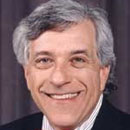You don't have to celebrate Christmas to experience the spiritual benefits of Advent
Published in Lifestyles
Ellen O'Brian hadn't bought a candy-filled advent calendar in years, but when she saw the festive cardboard box with little numbered panels in her local natural foods store, she couldn't resist.
"It's put out by a chocolate maker called Divine, and it's dark chocolate for the dark time of the year," said O'Brian, founder of the Center for Spiritual Enlightenment in San Jose. "It's vegan, it's fair trade and it's chocolate. I love all those things."
As the author of the 2022 book "Path of Wonder: A Meditator's Guide to Advent," O'Brian's relationship to the centuries-old Christmas tradition of counting down the days before the holiday is typically less about sugar and more about meditating on a succession of themes tied to the season — lighting up the long dark nights of winter, joy, new life and peace. While she couldn't help succumbing to the worldly pull of Advent chocolate at the store, she also believes that this year the spiritual practice of Advent is more important than ever.
"Advent is a time to go in, a time to contemplate," she said. "It's a time to start preparing for the new life that we hope for in the coming year. Especially now, we need the hope of light and peace."
The specifics differ across cultures, but traditional Advent practices, which began this year on Dec. 1 and end on Jan. 6, invite observers to remember that all the decorating, gift shopping, cookie baking and party hopping is ultimately in service of celebrating the things that are most important to us: family, community, faith, generosity and love.
At a time of year when to-do lists become gargantuan and materialism rockets, religious practitioners from a variety of Christian denominations say that the spiritual practice of Advent provides a counterweight to the Christmas season's commercialism.
"Even if you don't believe in God, all of us receive and give," said Lori Stanley, director of the Loyola Institute for Spirituality in Orange. "You could just say, 'Every day during December I'm going to be intentional about giving something to someone and I'm going to be mindful of what I receive.' It engages the heart and helps you get outside of yourself."
Advent's origins
Advent calendars like the one O'Brian bought trace their origins to Germany in the 1800s, but the spiritual practice of Advent goes much further back. Church records suggest it was already in place by 567. It was initially conceived as a time of fasting and penitence, not unlike Lent, during which observant Christians prepared themselves to celebrate the birth of Jesus Christ at Christmas. Over the centuries it evolved to focus less on sin and more on the themes of love and hope embedded in the Biblical story of Jesus' birth that begins with Mary's willingness to open her womb to the son of God and ends when the three wise men come to visit the new baby in a manger.
"Advent is when we celebrate the narratives that give us insight into how God is entering the world," said Jesuit Father Allan Figueroa Deck, a scholar of pastoral theology at Loyola Marymount College. "In Advent we raise up the expectation and hope that despite the darkness, despite the reality of evil, despite all the injustice in the world, our God is a God of love, who loves His creation so much that He enters into it and subjects himself to that human reality."
How different religions celebrate advent
At church and at home, Catholics often honor this time of year by creating an Advent wreath — a circle of greenery with four candles around it that are lit one by one on successive Sundays until all four candles are lit.
"We light the candle and we come together for a meal and pray," Deck said. "The candle symbolizes illumination, helping us to see where we're going and fire is a symbol of transformation."
Cecilia González-Andrieu, professor of theology at Loyola Marymount University and co-chair of the LMU Latino Theology and Ministry Initiative, said the core of the religious practice of Advent is to put oneself into the lives of the Biblical characters Mary and Joseph and imagine what it would be like to prepare to receive the child of God.
"We're trying to make ourselves feel like he comes every year, again, and the world is born anew," she said. "The whole point is to help us feel abundance and care and joy."
Instead of having a candy-filled calendar, some Latino families will create an extended nativity scene at the beginning of Advent with the wise men placed far away in the room, González-Andrieu said. Each Sunday the wise men are moved a little closer to the empty crib as the days tick closer to Christmas when the baby appears. These wise men, or magi, will eventually arrive at the manger on Jan. 6, also known as Epiphany or Three Kings Day.
"We do gift giving on Jan. 6 because that's when they bring the gifts to the child," González-Andrieu said.
Advent practices are less common in Evangelical churches, but that may be changing thanks in part to efforts by Biola University in La Mirada which started the Biola University Advent Project in 2013. Participants from the Evangelical community and beyond are invited to sign up to receive a free daily email for each of the 40 days of Advent. Each missive includes art, music, poetry, a devotional writing and a piece of scripture that all relate to each other and revolve around themes of hope, peace, joy and love.
"Ideally it would be something that could be a daily personal liturgy, or you could look at it for five minutes while you're standing in line at the grocery store," said Luke Aleckson, director of the Center for Christianity, Culture and the Arts at Biola University who heads the project. "It's a calming centering way to focus at the beginning or end of the day."
The project had a modest start when it was first introduced in 2013, but has grown rapidly in subsequent years with 18,000 participants in 2017 and 63,000 in 2023.
"The Evangelical church in general had gotten rid of a lot of deeper, meditative spiritual practices, but recently it's begun to realize why practicing certain liturgical rhythms is important to our faith," said Mike Ahn, dean of spiritual development at Biola who has contributed pieces to the project. "Advent provides an on-ramp for people to meditate and remember what we are trying to connect to at this time of year, and that's such an important part to rekindle in Evangelicalism."
Making an advent practice your own
For those who may be seeking a less Jesus-centered practice of Advent, Stanley of the Loyola Institute for Spirituality suggests a modified version of a prayer practice called Lectio Divina, which means divine reading in Latin. It's traditionally done by reading a piece of scripture (Lectio), reflecting on what you read and how that particular text is speaking to you today (Meditatio), imagining how to prayerfully respond to what the text might be saying or asking of you (Contemplatio) and then sitting quietly, noticing any feelings or emotions that might be coming up (Oratio).
If scripture is not your thing, Stanley says you can just as easily do this practice using a piece of poetry or other art work.
"I've done it with music where we look at what is this music saying to you, and whether or not you believe in a higher power, what are you being invited to?" Stanley said. "These prayer practices allow us to come into contact with the truest forms of ourselves and how we were created to be."
And if even that seems too much, you might experiment with simply lighting a candle every Sunday leading up to Christmas and offering your own prayer for peace said O'Brian, who teaches the spiritual practice of Kriya yoga, which was brought to the U.S. by Paramahansa Yogananda. O'Brian recommends leaving the burning candle out as a reminder to contemplate your own spirituality at this time of year.
And, of course, there's also no harm in indulging in a small piece of chocolate or candy a day as sunlight dwindles and the Christmas holiday approaches. You can even make that it's own meditation: a burst of sweetness in this dark time of year can provide its own sense of joy and hope.
"Maybe I bought that calendar because I was looking for a spiritual reason for chocolate," O'Brian said.
©2024 Los Angeles Times. Visit at latimes.com. Distributed by Tribune Content Agency, LLC.
























Comments